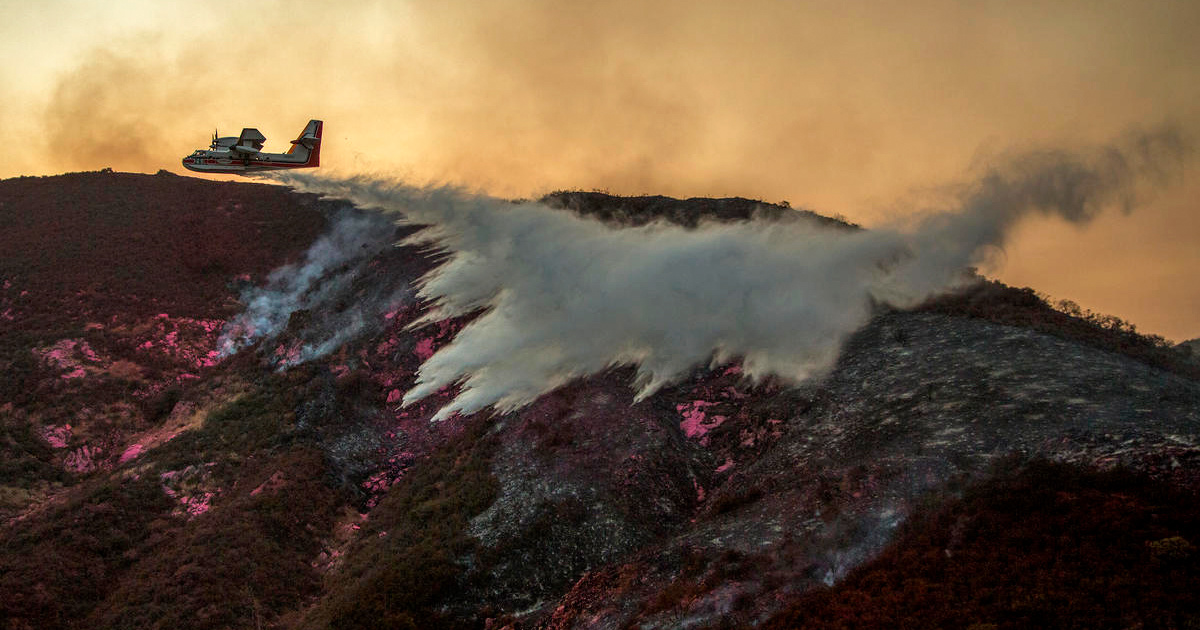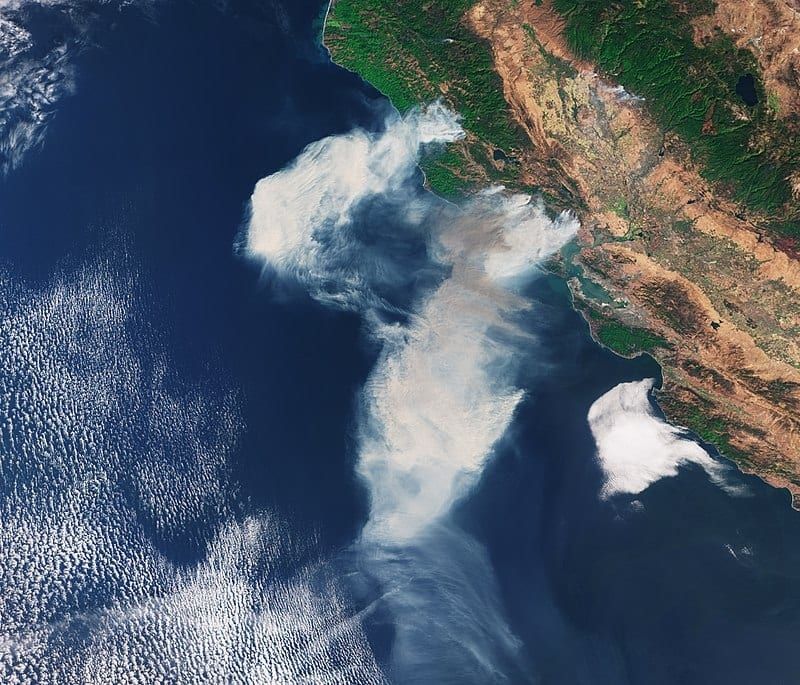

By Rolf Skar
The Camp Fire raging in Northern California is now the most devastating and deadly fire in the state’s recorded history. Simultaneously, deadly and destructive fires are burning in Southern California, as the Woolsey and Hill fires have engulfed iconic areas of Malibu and West Hills. With dozens dead, hundreds missing and thousands of structures destroyed, our hearts go out to those impacted across the region.
Dramatic media stories tend to highlight what’s currently happening with firefighting efforts, but little attention is spent looking at the suite of issues that can make wildfires bigger, faster and more dangerous to people and our nation’s treasured wildlands.
Worse, some politicians and corporations spread misinformation and false solutions when fires burn in an attempt to use these emergency situations to push an anti-environmental agenda. Trump and his Secretary of the Interior Ryan Zinke are parroting talking points of a logging industry that is trying to gut environmental safeguards and increase taxpayer subsidized logging on public lands.
The following list is not a specific analysis of the current disasters, but rather a wider look at trends impacting the occurrence of forest and wildland fires today.
Satellite image of the wildfires currently affecting much of Southern California.NASA
1. Industrial Logging has Increased Fire Risk
Industrial logging has dramatically increased fires and fire risk by removing large commercially-valuable trees—the very trees which are the most resistant to fire, and which create shade. Logging older trees and opening up the forest canopy makes things hotter and drier, and more prone to fire. The sticks and wood left over from logging, called “slash,” often remain behind for years on the ground like kindling.
Industrial logging also requires roads. Many thousands of old, unused logging roads riddle the U.S. National Forests, serving as superhighways for flammable, invasive weeds. In addition, these roads increase accidental and intentional human fires in our forests. The legacy of taxpayer subsidized logging on our public lands and industrial logging on private lands has left us with a mess that will take many generations to fix.
Solution: Refocus the U.S. Forest Service and Bureau of Land Management away from subsidized industrial logging to jobs focused on ecological restoration and preventative fire safety.
2. Smokey the Bear Was Wrong
A “put out every fire” approach to wildland fire management for decades has left us with a fire deficit which can fuel unusually big, hot fires. Many forests in the West have “skipped” fires that naturally would have occurred due to overly-aggressive fire suppression. Ecologically speaking, these forests need to burn, as they have for thousands of years, to sustain a cycle of life, death, and renewal. We need to protect people and property, but extinguishing every wildland fire in a region that needs them to regenerate only, well, backfires over time.
There are a whole host of things fires do for natural forests to keep them healthy, and to fuel the cycle of life, death, and regeneration that sustained forests for thousands of years before Europeans showed up. Heavy-handed fire suppression was strongly supported by the logging industry whose spokespersons now, ironically, call for more aggressive logging to remedy the mistake they helped perpetrate on our forests for decades.
Solution: Prioritize fire-fighting to protect human lives and property; don’t risk the lives of firefighters and waste taxpayer money on fires that are not threats to communities. And leave fire-affected forests alone to allow for natural regeneration—some of the most ecologically important forests in the American West are intact post-fire forests that provide vital wildlife habitat and are home to numerous imperiled species, such as Great Gray Owls, California Spotted Owls and Black-backed Woodpeckers.
A firefighting jet drops fire retardant during the Holy Fire near Lake Elsinore, California. Thick smoke and ash spewing from the fire prompted air quality warnings.
David McNew / Greenpeace
3. Smokey the Bear Was (Sorta) Right
No matter how hot or dry, forests don’t spontaneously burst into flames. An ignition source is needed to get a fire going. In nature, it’s really only lightning strikes that serve as ignitions. And lightning often comes with rain. However, human activity is really good at starting fires in a wide variety of ways, from campfires, cigarette butts, and fireworks to sparks from trailer hitch chains dragging on a road. It is also important to recognize that urban infrastructure needs to be properly maintained to prevent it from creating ignitions. A faulty power line has the potential to create a spark.
These human-caused ignitions often happen at times of year when natural ignitions would rarely occur (such as extreme droughts when lightning storms are relatively rare). Humans are so good at starting fires that more than 80 percent of wildland fires in the American West are ignited by human activity.
Solution: Reduce human-caused fire ignitions by closing and removing unneeded logging roads, and continue public education efforts (we can agree on this, Smokey). In addition, Smokey should also bring his message to corporations and governments that are in charge of the faulty infrastructure that oftentimes sparks these fires.
4. Climate Change Can Make the Problems Humans Have Created Worse
Though it is difficult to point to any fire and say climate change has single-handedly caused it, there is broad scientific consensus that global warming will bring hotter, drier conditions to the American West, and set the stage for more extreme fire events. This, combined with decades of unsustainable logging, road-building, and fire suppression could push forests beyond their capacity to deal with fire.
Solution: Conserve natural forests and foster a just transition into renewable energy sources to prevent the worst impacts of climate change, including bigger, more dangerous fires in the future.
Part of the skyrocketing cost of wildland fire fighting has resulted from expanded human development into what once was remote, fire-prone landscapes. With more homes and buildings in hot-zones, there is more need for aggressive firefighting when fires do take place. Just as building in a flood-plain or seismically-active area, homes and human infrastructure in fire-prone areas should be built and maintained with fire safety in mind.
Solution: Be smart about development, and be fire-ready. Prioritize prescribed burns and mechanical fuel removal in and around communities where it will do the most good. Fund these efforts, and make sure rich and poor alike can live in fire-safe homes. Prevention is worth much more, in terms of human life, forest health, firefighter safety and taxpayer dollars than desperate last-ditch fire fighting.
In October 2017, Northern California had a series of 250 wildfires that started burning across the state. The wildfires broke out throughout Napa, Lake, Sonoma, Mendocino, Butte, and Solano Counties during severe fire weather conditions.European Space Agency
6. Fire-Fighting Has Changed—and It Now Involves a Lot More Burning
Forest fire fighting has evolved over time based on technology, science and, perhaps most importantly, politics. The U.S. government’s approach to fire once was one of full-on direct attack—an approach that is costly and dangerous. Now, an informal policy known as “back off and backfire” dominates. Backfires, which are set by fire fighting teams, burn up fuel from a fire break so that when the wildfire reaches that zone, it has little to burn. Backfires are now a significant percentage of total fire size. Simply put, the U.S. now has a fire fighting strategy that involves making a lot more fire happen—literally “fighting fire with fire”. The given fire’s total size, regularly reported by the media, rarely includes an acknowledgment that some of the “fire” is actually the “fire fighting.” And, the ecological effects of backfires are only starting to be evaluated.
Solution: Since they are two different things, the U.S. government should track and report the difference between “real” fires and backfires (aka “suppression fires”). Federal and local authorities should also fund ecological studies of the effects of backfires to better inform fire suppression and forest management over time.

 233k
233k  41k
41k  Subscribe
Subscribe 


